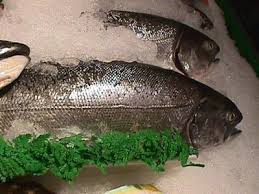 But atrazine often washes into water supplies and has become among the most common contaminants in American reservoirs and other sources of drinking water.
But atrazine often washes into water supplies and has become among the most common contaminants in American reservoirs and other sources of drinking water.
Now, new research suggests that atrazine may be dangerous at lower concentrations than previously thought.
Recent studies suggest that, even at concentrations meeting current federal standards, the chemical may be associated with birth defects, low birth weights and menstrual problems.
Laboratory experiments suggest that when animals are exposed to brief doses of atrazine before birth, they may become more vulnerable to cancer later.
TVNL Comment: Previously "thought" or previously "disclossed?"

 Environmental News Archive
Environmental News Archive



 When government scientists went looking for mercury contamination in fish in 291 streams around the nation, they found it in every fish they tested, the Interior Department said, even in isolated rural waterways.
When government scientists went looking for mercury contamination in fish in 291 streams around the nation, they found it in every fish they tested, the Interior Department said, even in isolated rural waterways. Earth is experiencing its "sixth great extinction event" with disease and human activity taking a devastating toll on vulnerable species, according to a major review by conservationists.
Earth is experiencing its "sixth great extinction event" with disease and human activity taking a devastating toll on vulnerable species, according to a major review by conservationists. Chevron Corp., which expects to be on the losing end of a long-running environmental lawsuit in Ecuador, is turning its attention to fighting the expected multibillion-dollar verdict in the U.S.
Chevron Corp., which expects to be on the losing end of a long-running environmental lawsuit in Ecuador, is turning its attention to fighting the expected multibillion-dollar verdict in the U.S. Secretary of Agriculture Tom Vilsack gave his personal approval for a 381-acre clear-cut in America's largest stand of temperate rain forest.
Secretary of Agriculture Tom Vilsack gave his personal approval for a 381-acre clear-cut in America's largest stand of temperate rain forest. Conservationists say new strategies must be devised to protect animals, such as the rhinoceros and tiger, from extinction. Hundreds of delegates who attended a meeting by CITES, the Convention on International Trade In Endangered Species, are urging tougher police action to stop the lucrative illegal trade in endangered species.
Conservationists say new strategies must be devised to protect animals, such as the rhinoceros and tiger, from extinction. Hundreds of delegates who attended a meeting by CITES, the Convention on International Trade In Endangered Species, are urging tougher police action to stop the lucrative illegal trade in endangered species. A rural town in Australia has voted overwhelmingly to ban the sale of bottled water over concerns about its environmental impact.
A rural town in Australia has voted overwhelmingly to ban the sale of bottled water over concerns about its environmental impact. An international group of academics is urging world leaders to abandon their current policies on climate change.
An international group of academics is urging world leaders to abandon their current policies on climate change. New research, which reconstructs the extent of ice in the sea between Greenland and Svalbard from the 13th century to the present indicates that there has never been so little sea ice as there is now. The research results from the Niels Bohr Institute, among others, are published in the scientific journal, Climate Dynamics.
New research, which reconstructs the extent of ice in the sea between Greenland and Svalbard from the 13th century to the present indicates that there has never been so little sea ice as there is now. The research results from the Niels Bohr Institute, among others, are published in the scientific journal, Climate Dynamics.






























